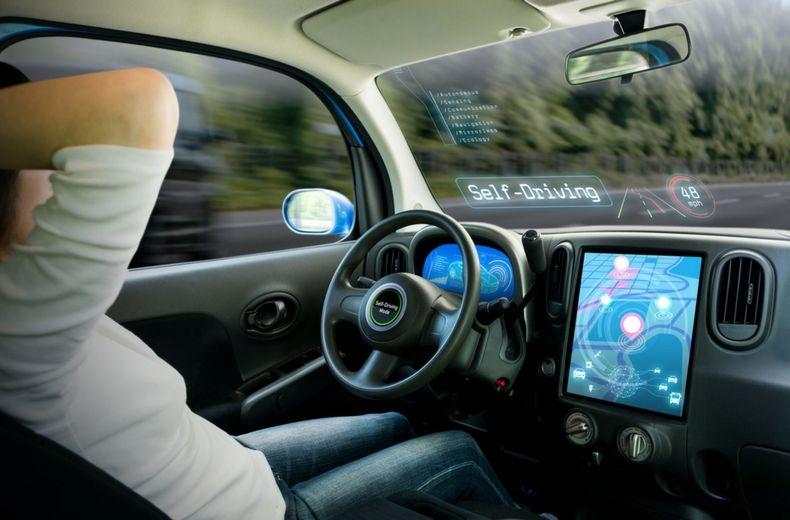[Source: https://thenextweb.com/contributors/2017/11/09/alphabet-vs-tesla-will-win-self-driving-car-race/]
“So, first of all, let me assert my firm belief that the only thing we have to fear is…fear itself — nameless, unreasoning, unjustified terror which paralyzes needed efforts to convert retreat into advance.”
Unless you had been living under a rock, you would know about the latest outrage in the social media. Autonomous vehicles or driverless cars were the coolest thing ever, until they weren’t. Elon Musk was the smartest man ever, until he wasn’t.
Indeed, just as everyone thought that we were headed for a future with driverless cars, trucks, and what not, the recent crashes of autonomous vehicles, first by Uber and a more recent one by Tesla, have put a question mark on all self-driving car projects.
Suddenly, no one wants to touch self-driven cars even with a barge pole! We live in the Age of the Outrage, so this was only to be expected. Trends are created, only to be discarded. Heroes are made, only to be shamed.
For proponents of self-driven cars, it’s time to buckle up, because the outrage will only get worse, and address the issues raised calmly, with facts and reason.
The Ides of March
When the history of self-driven cars is written sometime in the future, March 2018 will be remembered as one of the worst months ever. It all started when a Volvo XC90 struck a 49-year old bicyclist by the name of Elaine Herzberg in Arizona on March 18.
Herzberg was badly hurt from the crash. She was immediately taken to a hospital, where she passed away, unable to recover from her injuries, according to a statement from the Tempe police.
Now, there are dozens of deaths due to road accidents in America every day. But this incident made headlines in newspapers all over the world because it the Volvo XC90 was no ordinary car.
It was a self-driven car fitted with a highly sophisticated collision-avoidance technology by Uber. Uber was forced to suspend the testing of similar vehicles in Toronto, Pittsburg and other cities in North America.
Toyota decided to stop the testing of driverless cars in response, and Audi has delayed the launch of the A8, considered to be the most advanced self-driven car of its kind.
If that wasn’t bad enough, there was another fatal crash involving a self-driven car on March 23. Tesla revealed that a software engineer from California, Wei Huang, 38, crashed his Model X when it was on an Autopilot and was killed instantly.
The hue and cry the incident raised was almost instantaneous and put into question Tesla’s famed semi-autonomous driving system. Elon Musk, who was hailed as the new Steve Jobs when he launched a car into space, was under attack!
Mike Ramsey, a Gartner analyst and an expert on self-driving technologies said, “At the very least, I think there will have to be fundamental changes to Autopilot. The system as it is now tricks you into thinking it has more capability than it does. It’s not an autonomous system. It’s not a hands-free system. But that’s how people are using it, and it works fine, until it suddenly doesn’t.”
Looking Beyond the Outrage
Was the autonomous system really at fault for the crashes? In the case of Herzberg, the video footage suggests that the Uber operator had taken his eyes off the road just before the crash. We have to wait for the official verdict on that.
But the fact is 1.3 million people die in road crashes across the world each year, that’s an average of 3,287 deaths a day. Many more are injured or disabled.
In the United States, 37,000 people die in road accidents each year. There is one automotive fatality every 86 million miles in the United States across all vehicles.
For self-driven cars, the fatality rates are much lower. For Tesla cars on Autopilot, there is only one fatality every 320 million miles. That means you’re 3.7 times less likely to be involved in an accident if you are driving a Tesla car on an autopilot, compared to driving a car yourself.
Over 90 percent of car crashes in the America are because of some form of driver error. Autonomous cars eliminate the driver error. After all, cars on autopilot don’t get drunk, stressed or talk on the mobile while driving.
Waymo, Google’s self-driving car project, has been a highly successful one and one that is very safe. Google cars have self-driven more than 5 million miles and have had only about 18 minor traffic accidents.
So Are Autonomous Cars Dangerous?
No, the technology is not yet mature, and it is by no means perfect, but autonomous vehicles are by no means dangerous. According to Google, almost all accidents involving its self-driven test vehicles were because of the fault of other drivers.
We are not completely there yet, but we need to get there slowly and it is going to take many steps and mishaps to do that. These cars can get better and it is only a matter of time before they are able to sense and navigate the traffic more accurately.
After all, transitioning from horse buggies to cars took decades and so will this. Think about it: passengers in a plane driven in autopilot mode are not worried as they know that there is a pilot who is there to take over and so the transition for these vehicles will also happen.
Driverless cars are going to be of a great help to older adults and the disabled – people with impaired vision, slow reaction time and poor memory.
To stop the path to progress which could ultimately prevent millions of accidental deaths, help the elderly, disabled with mobility would certainly not be appropriate. Let’s look beyond the outrage and focus on what is truly important.

